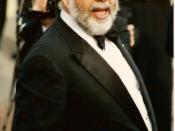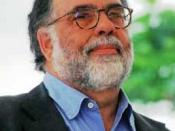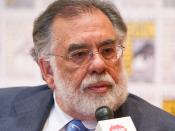W.K. Laurie Dickson, a researcher at the Edison Laboratories, gave birth to film. His invention was to make a practical celluloid strip that contained a sequenced strip of pictures. Thomas Edison built on his idea by inventing the Kinetograph, which was the first practical moving picture camera. He also came out with the Kinetoscope, a cabinet that contained a continuous loop of Dickson's films. It was projected by a lamp and lens onto a glass and the viewer would enjoy the image through an eye piece. A man named Robert W. Paul was very interested in all of this and wanted to take it a step further, so he came up with the idea of displaying moving pictures for a group of people, and invented a film projector. The first showing with his projector was in 1895. The movies were mostly played in store fronts, as traveling exhibits or as acts in vaudeville programs.
Normally a movie would be under a minute long, a single scene of everyday life, perhaps a public event or a sporting event. There was practically no technique involved. No camera movement, no editing and the compositions were flat and stagy. The novelty of moving pictures took off in countries around the world before the end of the century. This was the beginning of the silent film era.
A silent film is a film with no recorded spoken dialogue. In 1860, the technology for silent films was invented but it stayed a novelty from 1880 to 1900 when single reel films became easy to make. The thought of mixing motion pictures with recorded sound is almost as old as the motion picture itself, but because of the all the difficult challenges involved, most films were silent before the late 1920's. People had tried for years...


